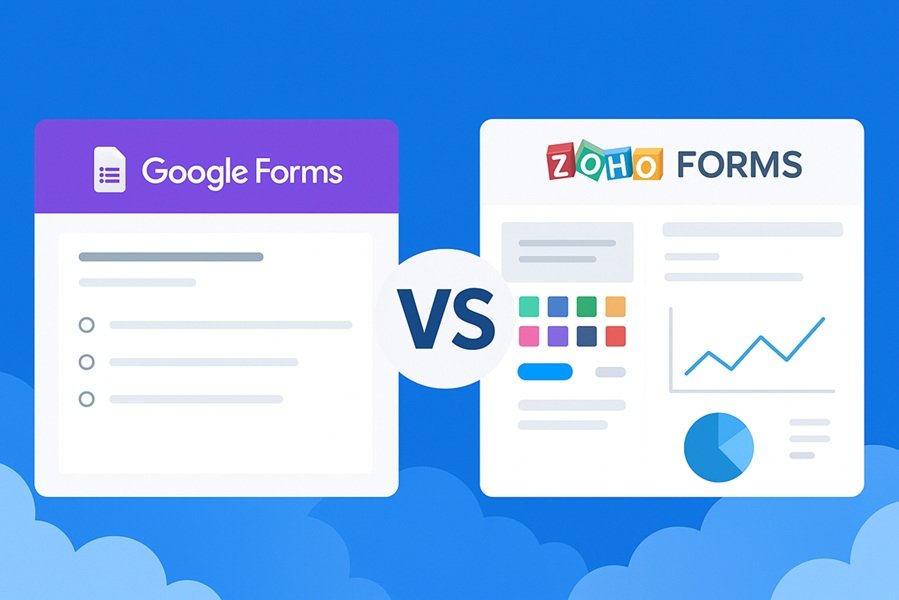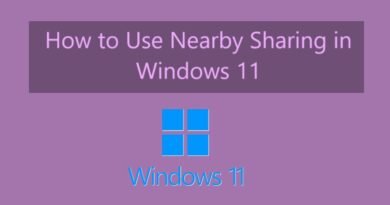
Getting Started with Zoho Forms
🧭 1. Getting Started with Zoho Forms
Step 1: Sign Up or Log In
- Visit https://forms.zoho.com.
- Sign in using your Zoho account, or create a free one if you don’t have it.
- You can also sign in with Google, Microsoft, or LinkedIn.
Read This: Zoho Forms vs Google Forms: A Complete Comparison for 2025
Step 2: Choose a Plan
- Zoho Forms offers a free plan (basic features) and paid plans (advanced logic, integrations, analytics, etc.).
- Start with the free version to explore.
🧱 2. Creating Your First Form
Option A: Use a Template
- Zoho provides ready-made templates such as:
- Contact Forms
- Event Registration
- Feedback Surveys
- Job Application Forms
- Click “Use Template”, and customize it.
Option B: Create From Scratch
- Click “Create Form” → “Blank Form.”
- Give your form a Title and Description.
- Add fields using the drag-and-drop builder.
Common field types include:
- Single Line / Multi-line text
- Email / Phone / Number
- Dropdown / Radio / Checkbox
- File Upload / Image Upload
- Date / Time / Signature
🎨 3. Customizing Form Design
- Go to the “Themes” tab to choose colors, fonts, and layouts.
- You can add your brand logo and background image.
- Customize the thank-you message or redirect users to a specific URL after submission.
⚙️ 4. Adding Logic and Validation
Conditional Logic
- Show or hide specific fields based on user input.
- Example: If “Interested in Product A” → show “Product A Details” section.
Field Rules
- Make questions mandatory.
- Add validation for correct email or number formats.
Page Rules
- Redirect users to specific pages or sections depending on their responses.
🔄 5. Setting Up Workflows
- Under the Automation section, you can:
- Send an email notification when a form is submitted.
- Trigger approval workflows (e.g., manager approval).
- Integrate with Zoho CRM, Zoho Desk, or third-party apps.
📤 6. Sharing the Form
Multiple Sharing Options:
- Public URL: Copy and share your form link anywhere.
- Embed on Website: Add the form directly to your WordPress, Blogger, or HTML page.
- QR Code: Download a QR code for offline campaigns.
- Email Campaign: Send the form via email through Zoho Campaigns or Mailchimp.
- Social Media: Share directly to LinkedIn, Facebook, or Twitter.
📊 7. Managing and Analyzing Responses
- Go to the “All Entries” tab to view individual submissions.
- You can filter, search, and export data to:
- Excel (.xlsx)
- CSV
- Zoho Sheet
Analytics Tab
- See submission trends, traffic sources, and conversion rates.
🔗 8. Integrations
Zoho Forms integrates with:
- Zoho CRM – Automatically create leads from submissions.
- Zoho Sheet / Zoho Analytics – For data visualization.
- Google Drive / Dropbox – For file uploads.
- Slack / Microsoft Teams – For instant alerts.
- Zapier / Make – To connect with 5000+ apps.
🔐 9. Security Features
- CAPTCHA and spam protection
- SSL encryption
- GDPR-compliant data handling
- Role-based permissions for teams
💡 10. Mobile App Access
- Download Zoho Forms App (Android/iOS) for offline data collection.
- Useful for field surveys, delivery forms, and event registrations without internet.
🧩 Pro Tip: Embed Zoho Forms in WordPress
You can easily embed a form on your WordPress site:
- Generate the embed code in Zoho Forms.
- Add it inside a WordPress Custom HTML block.
- Preview and publish — it works seamlessly.
✅ Conclusion
Zoho Forms is an advanced and secure alternative to Google Forms, ideal for:
- Businesses that need branding, automation, and analytics.
- Teams working with other Zoho apps (CRM, Desk, Campaigns).
- Anyone seeking more customization and workflow control.






